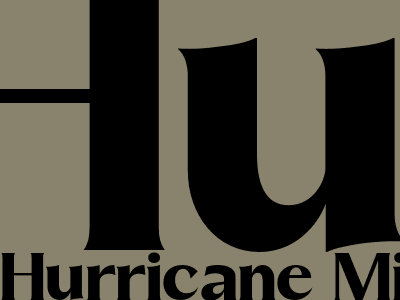The Impact of Hurricane Milton on Coastal Communities
Understanding the Devastating Effects of Hurricanes
Hurricanes, with their immense power and destructive force, pose a significant threat to coastal communities worldwide. Hurricane Milton, a powerful Category 4 storm, recently made landfall, leaving a trail of devastation in its wake. Understanding the impact of hurricanes like Milton is crucial for developing effective mitigation and response strategies.
Immediate Effects: Destruction and Displacement
The immediate impact of Hurricane Milton was catastrophic. The storm's powerful winds, torrential rains, and surging tides caused extensive damage to infrastructure, homes, and businesses. Entire neighborhoods were flooded, displacing countless residents and disrupting daily life. Communication lines were severed, leaving communities isolated and hindering rescue efforts.
Long-Term Consequences: Economic and Environmental Damage
The long-term consequences of Hurricane Milton extend beyond the immediate aftermath. The storm's impact on the local economy is severe, with businesses disrupted or destroyed, leading to job losses and reduced economic activity. Tourism, a vital industry for coastal communities, has been significantly affected, as damaged infrastructure and environmental degradation deter visitors.
Coastal Erosion and Habitat Destruction
One of the most severe long-term effects of hurricanes is coastal erosion. The powerful waves generated by Hurricane Milton eroded beaches and dunes, damaging coastal ecosystems and threatening infrastructure. The storm's high winds also caused widespread defoliation of vegetation, further exacerbating erosion and reducing natural barriers against future storms.
Health and Safety Concerns
The aftermath of Hurricane Milton poses significant health and safety risks to affected communities. Standing water can become breeding grounds for mosquitoes, increasing the risk of waterborne diseases. Damaged buildings and infrastructure can present hazards, such as electrical fires and structural instability. Additionally, displaced residents may face challenges accessing essential services like healthcare and clean water.
Adapting to the Threat of Hurricanes
Coastal communities must adapt to the ongoing threat of hurricanes to mitigate their impacts. This includes implementing building codes designed to withstand high winds and flooding, investing in coastal restoration projects to reduce erosion, and developing evacuation plans and emergency response protocols. By taking proactive measures, communities can minimize the damage caused by future hurricanes and protect the well-being of their residents.
Community Resilience and Collaboration
Building community resilience is crucial for overcoming the challenges posed by hurricanes. Collaboration between government agencies, emergency responders, community organizations, and residents is essential for effective response and recovery efforts. By working together, communities can share resources, coordinate assistance, and provide support to those in need.
Conclusion: Lessons Learned and the Road Ahead
The devastating impact of Hurricane Milton serves as a stark reminder of the need for preparedness and adaptation in coastal communities. By understanding the immediate and long-term effects of hurricanes, we can develop comprehensive strategies to mitigate their impacts and build more resilient communities. Through collaboration, innovation, and a commitment to sustainability, we can reduce the risks posed by future storms and ensure the well-being of coastal populations.

Hurricane Milton

Komentar